© 2025 MJH Life Sciences™ , Patient Care Online – Primary Care News and Clinical Resources. All rights reserved.
Continuous Glucose Monitoring for Type 2 Diabetes in Primary Care: 2021 Research Review
Continuous glucose monitoring for type 2 diabetes patients is gaining exposure in the literature with positive evidence accumulating. Examples follow.
Numerous studies have shown continuous glucose monitoring (CGM) to be beneficial for patients with type 1 diabetes (T1D). Until recently, evidence for the use of CGM for patients with T2D has been lacking.
Studies and reviews published in 2021 are now addressing the use of CGM for patients with T2D, especially those in primary care. Scroll through the slides below for concise summaries of key findings.
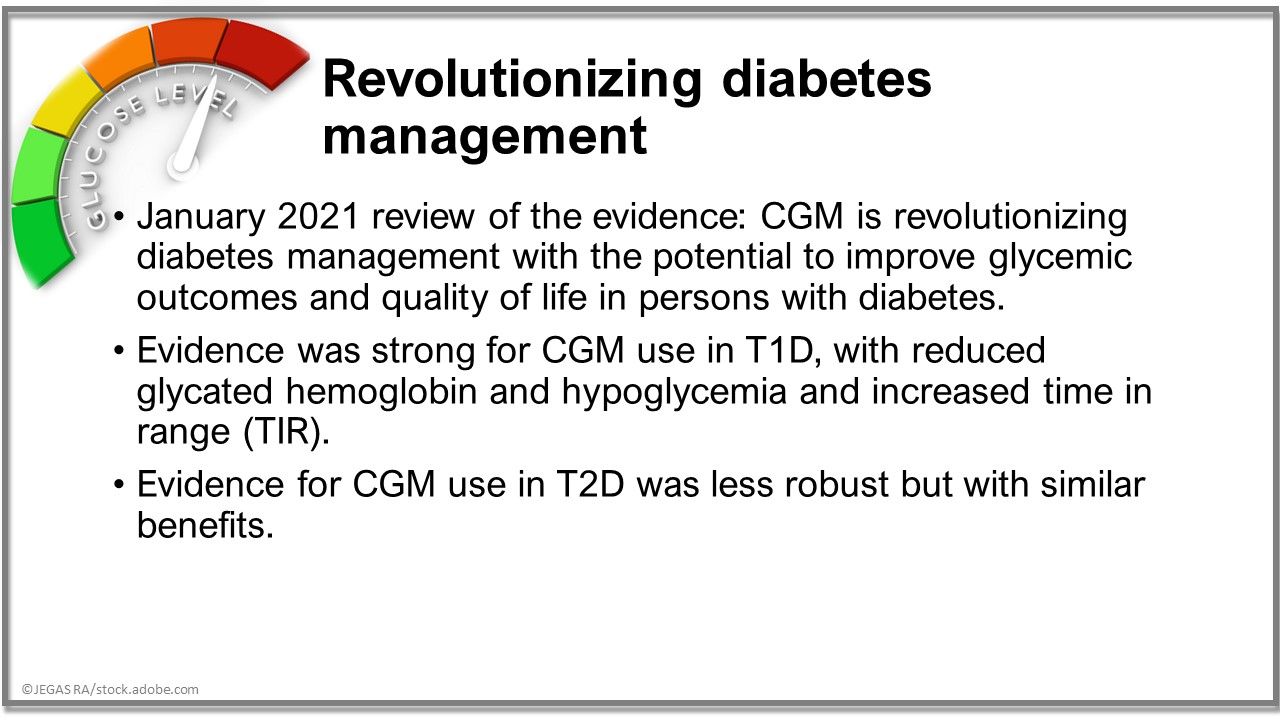
Revolutionizing diabetes management. In January of 2021, a review of the evidence concluded that CGM is revolutionizing diabetes management with the potential to improve glycemic outcomes and quality of life in persons with diabetes. Review authors cited strong evidence for CGM use in T1D, with reduced glycated hemoglobin and hypoglycemia and increased time in range (TIR), and less robust evidence for use in T2D but with similar benefits. Diabetic Medicine.
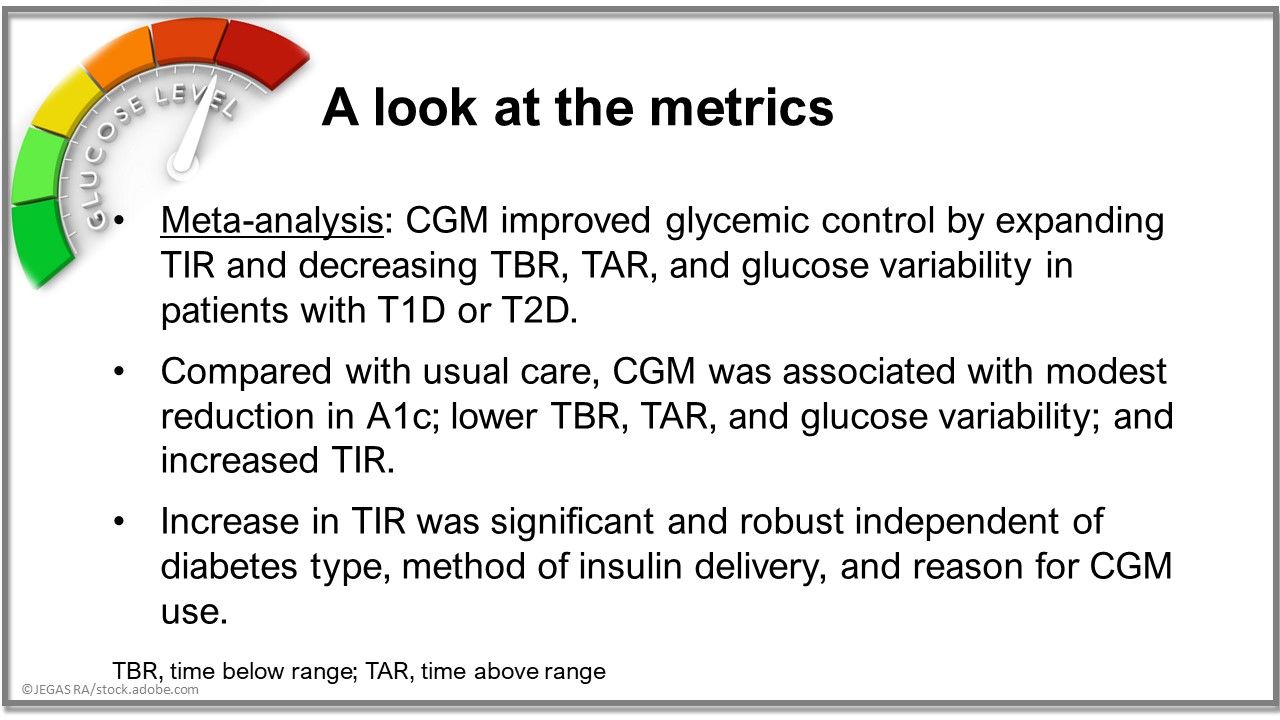
CGM: a look at the metrics. In a meta-analysis of randomized controlled trials, CGM improved glycemic control by expanding TIR and decreasing time below range (TBR), time above range (TAR), and glucose variability in patients with T1D or T2D. Compared with usual care, CGM was associated with modest reduction in hemoglobin A1c (HbA1c); lower TAR, TBR, and glucose variability; and an increase in TIR that was significant and robust independent of diabetes type, method of insulin delivery, and reason for CGM use. Diabetes Care.
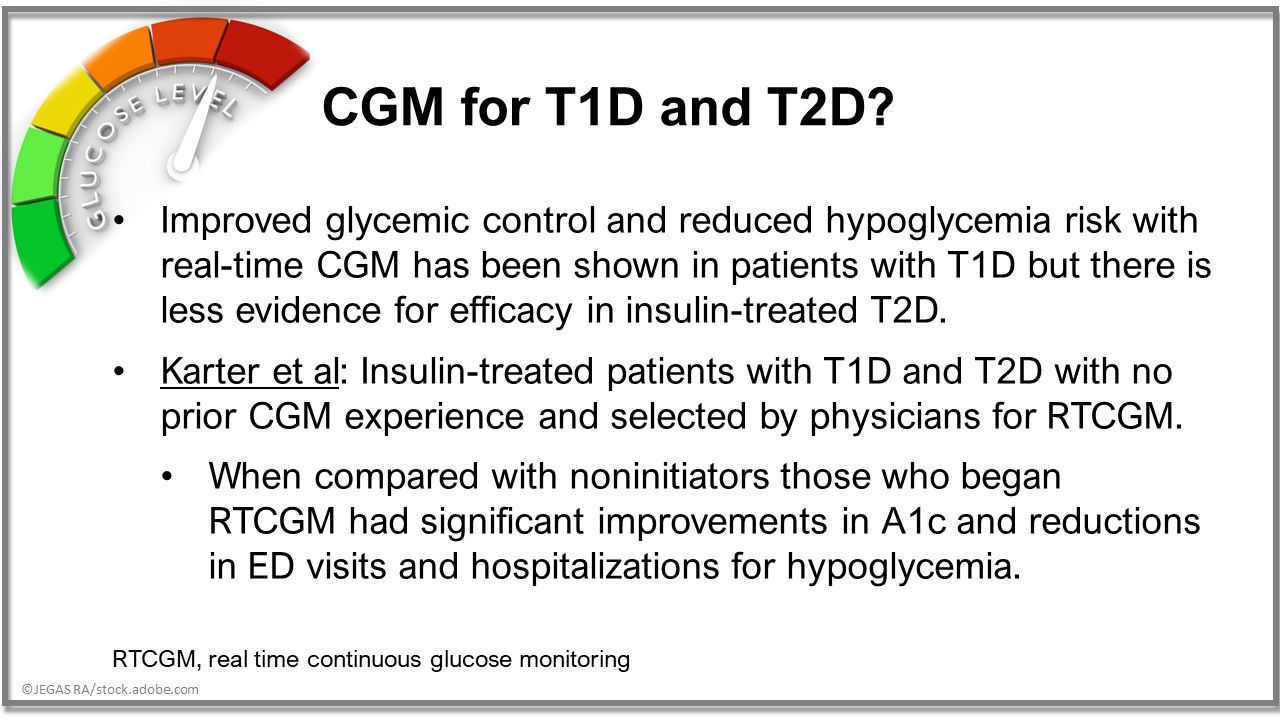
CGM for T1D and T2D? Karter et al observed that improved glycemic control and reduced hypoglycemia risk with real-time CGM had been shown in patients with T1D but there had been less evidence for insulin-treated T2D. In their study, insulin-treated patients with T1D and those with T2D selected by physicians for real-time CGM compared with noninitiators had significant improvements in HbA1c and reductions in ED visits and hospitalizations for hypoglycemia. JAMA.
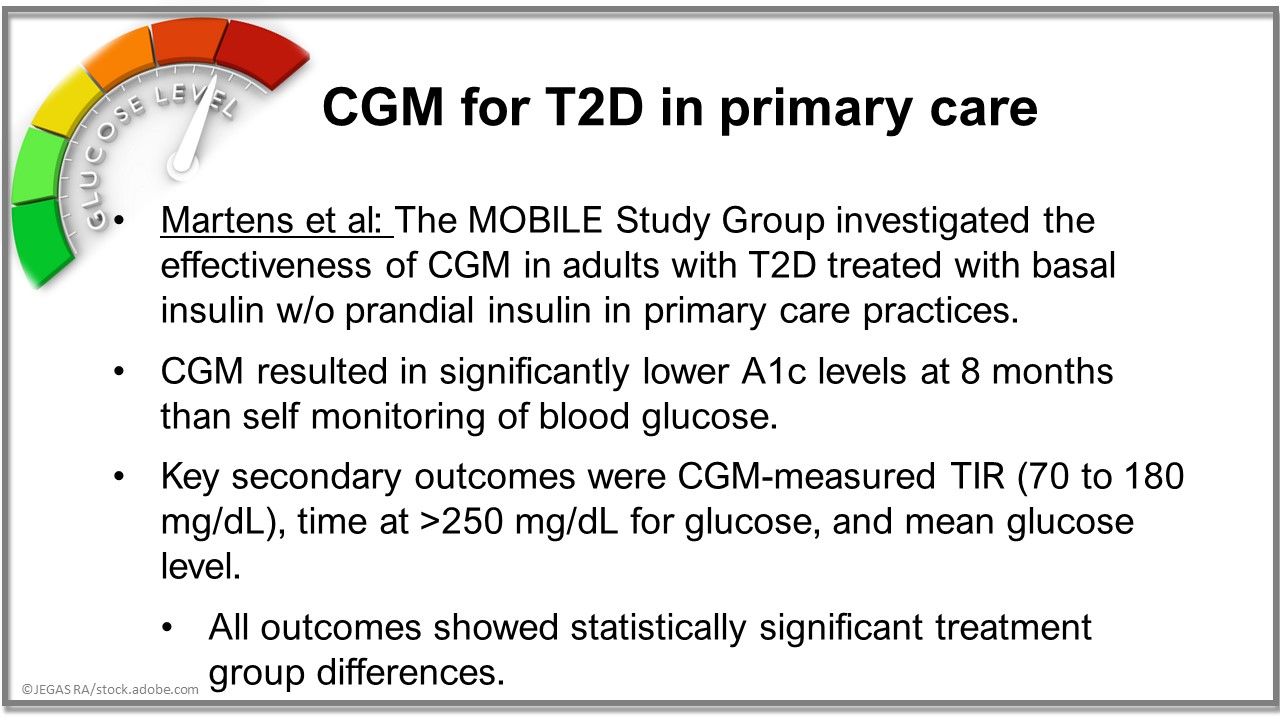
CGM for T2D in primary care. The MOBILE Study Group investigated the effectiveness of CGM in adults with T2D treated with basal insulin without prandial insulin in primary care practices. CGM resulted in significantly lower HbA1c levels at 8 months than blood glucose meter monitoring. Key secondary outcomes—CGM-measured time in the target glucose range (70 to 180 mg/dL), time at greater than 250 mg/dL for glucose, and mean glucose level—showed statistically significant treatment group differences. JAMA.
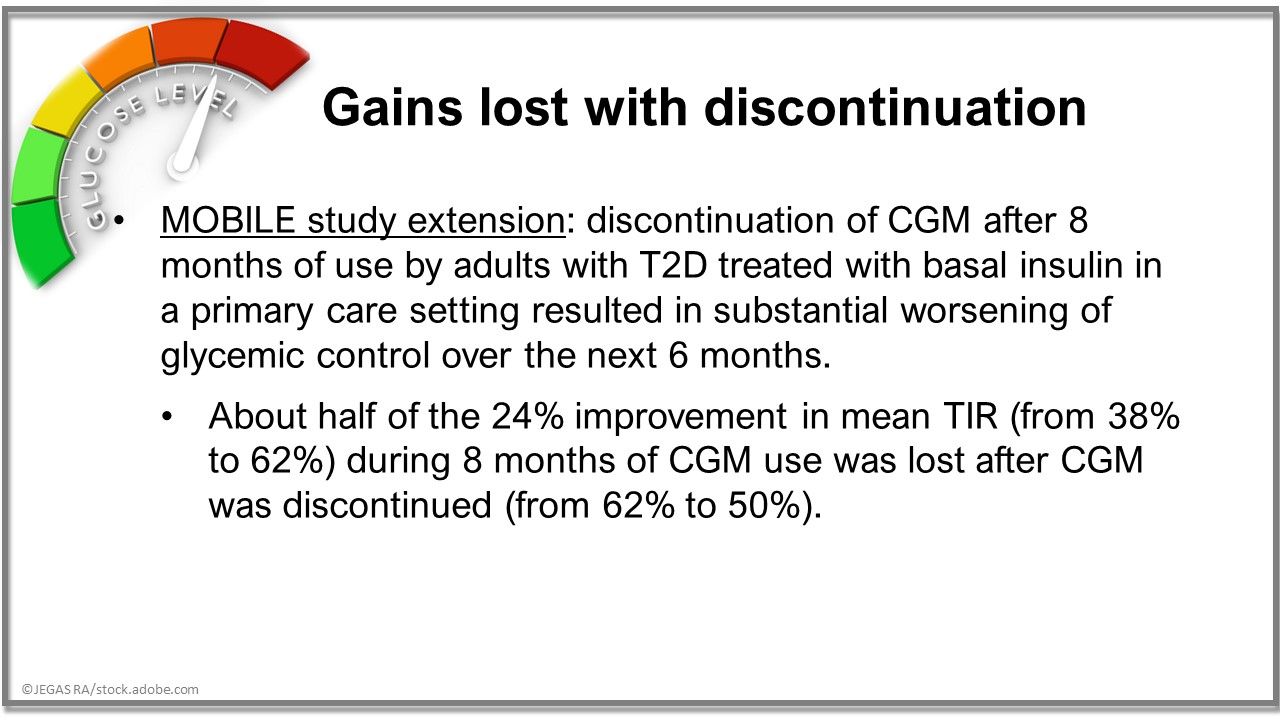
TIR gains lost with CGM discontinuation. In an extension of the MOBILE trial, discontinuation of CGM after 8 months of use by adults with T2D treated with basal insulin in a primary care setting resulted in a substantial worsening of glycemic control over the next 6 months. About half of the 24% improvement in mean TIR (from 38% to 62%) during 8 months of CGM use was lost after CGM was discontinued (from 62% to 50%). Diabetes Care.
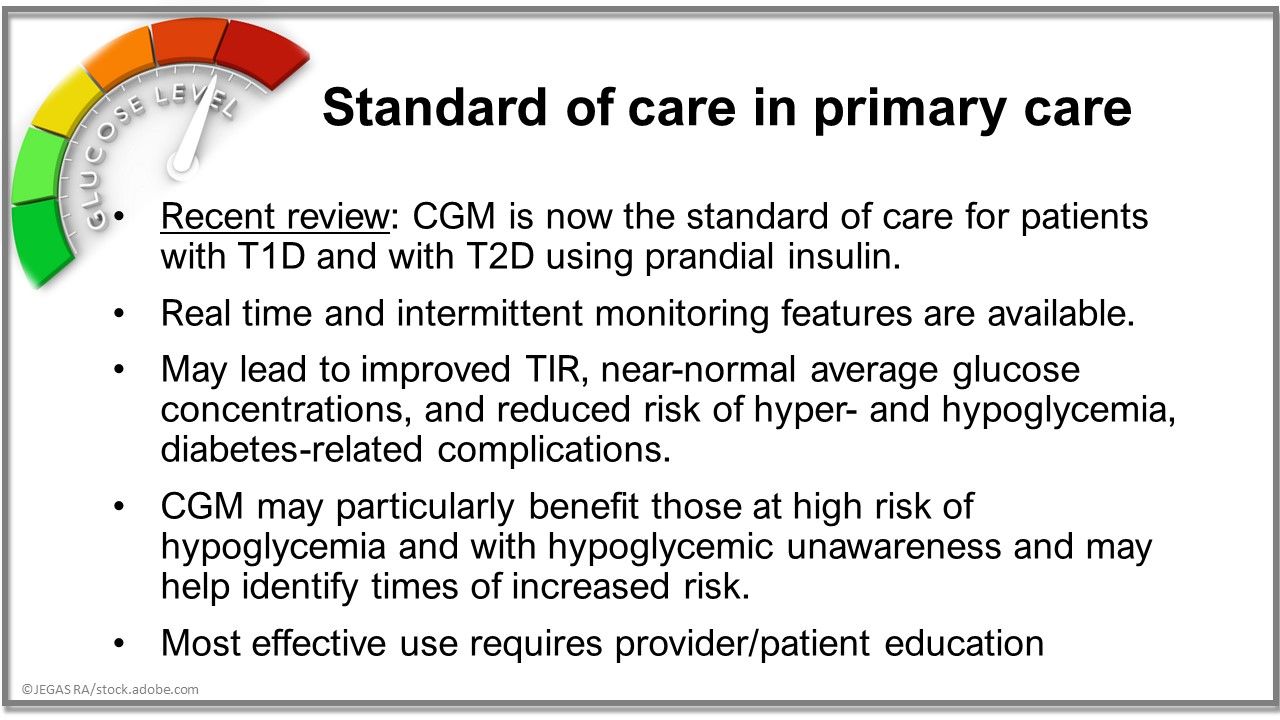
Standard of care in primary care. CGM is now the standard of care for patients with diabetes, review authors stated. Real-time CGM can indicate when glucose is in the normal range, and using CGM data can help patients stay in a normal range. Real-time CGM allows for creation of an ambulatory glucose profile and monitoring of TIR. Providers should individualize use of technology based on each patient’s needs, desires, and availability of devices. Annals of Medicine.
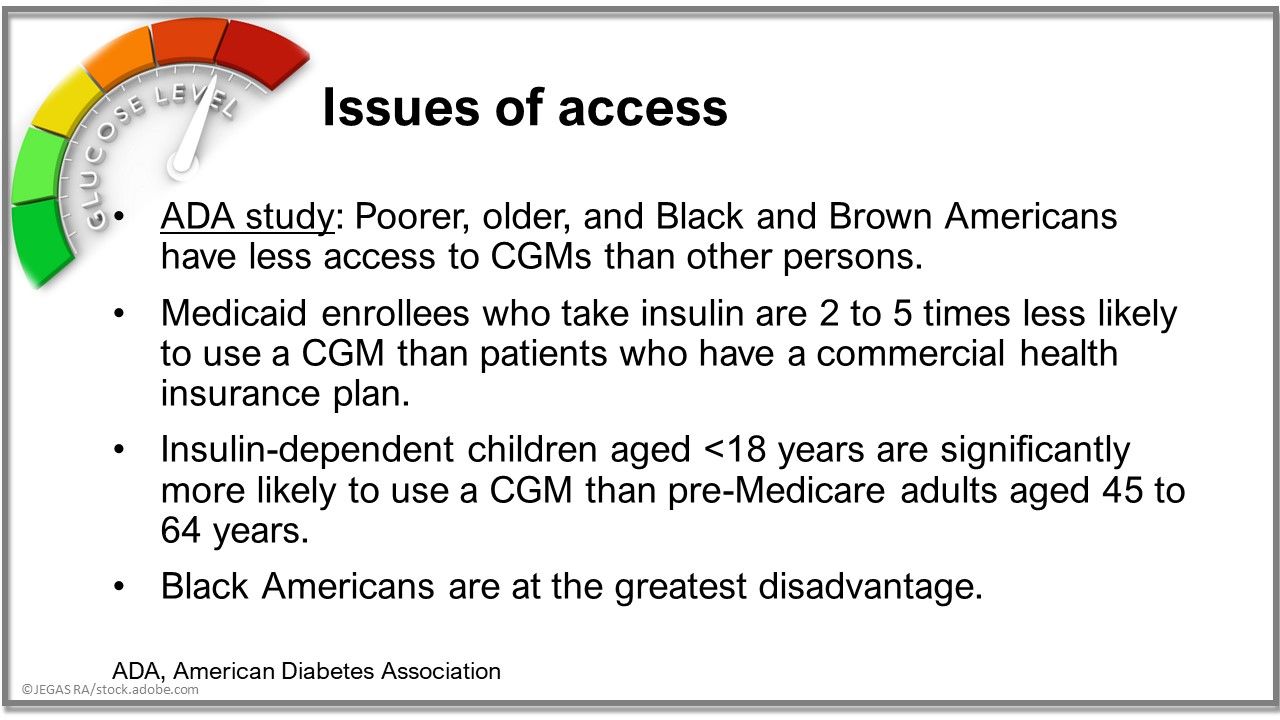
CGM: issues of access. Poorer, older, and Black and Brown Americans have less access to CGMs than other persons, an American Diabetes Association study found. Medicaid enrollees who take insulin are 2 to 5 times less likely to use a CGM than patients who have a commercial health insurance plan. Insulin-dependent children younger than 18 years are significantly more likely to use a CGM than pre-Medicare adults aged 45 to 64 years. Black Americans are at the greatest disadvantage. American Diabetes Association.

Promising strategies. The use of CGM in primary care, where most diabetes is managed, has increased significantly with improving technology and decreasing cost, suggested MOBILE study lead author Thomas Martens, MD. Optimized use will require access to CGM data and the expertise to use it. Promising strategies have emerged, but generalizing them to the broad population of primary care is ongoing. Current Opinion in Endocrinology, Diabetes and Obesity.




